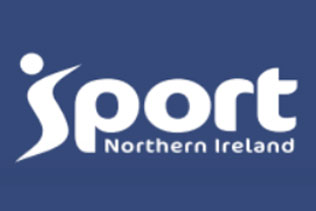IPC ELIGIBLE IMPAIRMENTS DESCRIPTION
Athletes wishing to compete in Para sport must have an Underlying Health Condition that leads to a permanent at least one of the Eligible Impairments listed below.
In order to be satisfied that an athlete has an eligible impairment, Paralympics Ireland, in its discretion, may require an athlete to provide evidence of any one or more of the following:
1. the Eligible Impairment
2. that the Eligible Impairment is permanent; and/or
an Underlying Health Condition
| Impairment | Description / Examples of an Underlying Health Condition that may lead to the impairment |
|
Impaired muscle power |
Reduced force generated by the contraction of a muscle or muscle groups (e.g. muscles of one limb, one side of the body, the lower half of the body). i.e. spinal cord injury, muscular dystrophy, post-polio syndrome, brachial plexus injury, Erb’s palsy, Guillain-Barre syndrome and spina bifida. |
|
Impaired passive range of movement |
Restriction or a lack of passive movement in one or more joints. i.e. arthrogryposis and contracture resulting from chronic joint immobilisation or trauma affecting a joint. |
|
Limb deficiency |
Total or partial absence of bones or joints as a consequence of trauma (i.e. traumatic amputation), illness (i.e. amputation due to bone cancer) or congenital limb deficiency (i.e. dysmelia) |
|
Leg length difference |
Difference in the length of the legs as a result of a disturbance of limb growth, or as a result of trauma. |
|
Short stature |
Reduced length in the bones of the upper limbs, lower limbs and/or trunk. i.e. achondroplasia, growth hormone dysfunction, and osteogenesis imperfecta. |
|
Hypertonia |
Increase in muscle tension and a reduced ability of a muscle to stretch caused by damage to the central nervous system. i.e. cerebral palsy, traumatic brain injury and stroke |
| Ataxia |
Uncoordinated movements caused by damage to the central nervous system. i.e. cerebral palsy, traumatic brain injury, stroke, spinocerebellar ataxia, Friederichs’ ataxia and multiple sclerosis. |
| Athetosis |
Continual slow involuntary movements. i.e. cerebral palsy, traumatic brain injury and stroke |
|
Vision impairment |
Reduced or no vision caused by damage to the eye structure, optical nerves or optical pathways, or visual cortex of the brain. i.e. retinitis pigmentosa and diabetic retinopathy |
|
Intellectual impairment |
A restriction in intellectual functioning and adaptive behavior as expressed in conceptual, social and practical adaptive skills, which originates before the age of 18 |
Non-Eligible Impairments:
| Examples of Non-Eligible Impairments include, but are not limited to, the following: | |
| · Pain | · Impaired motor reflex functions |
| · Hearing Impairment | · Impaired cardiovascular functions |
| · Low muscle tone | · Impaired respiratory functions |
| · Hypermobility of joints | · Impaired metabolic functions |
| · Impaired muscle endurance | · Tics and mannerisms, stereotypes and motor perseveration |
| · Joint instability, such as unstable shoulder joint, habitual/repetitive dislocation of a joint | |
A number of Health Conditions do not lead to an Eligible Impairment and are not Underlying Health Conditions. If an Athlete has both a Health Condition that will not lead to an Eligible Impairment and an Underlying Health Condition the athlete may be eligible to compete in Para sports.
An Athlete who has a Health Condition (including, but not limited to, one of the Health
Conditions listed below) but who does not have an Underlying Health Condition will not
be eligible to compete in Para sport. Health Conditions that:
1. primarily cause pain (ie. myofacial pain dysfunction syndrome, fibromyalgia or complex regional pain syndrome)
2. primarily cause fatigue (ie. chronic fatigue syndrome)
3. primarily cause joint hypermobility or hypotonia (ie. Ehlers-Danlos syndrome); or
4. are primarily psychological or psychosomatic in nature (ie. conversion disorders or post-traumatic stress disorder),
do not lead to an Eligible Impairment.
Further information can be found on the IPC International Standard for Eligible Impairments
Minimum Impairment Criteria (MIC):
To be considered eligible for Para Sport, an athlete with an eligible impairment must also comply with the Minimum Impairment Criteria (MIC). The MIC is set by each International Sport Federation and describes how severe an impairment must be for an athlete to be considered eligible.
Therefore, an athlete may meet eligibility criteria in one sport, but may not be eligible to compete in another sport.
MIC is assessed during the athlete evaluation.
If an athlete does not meet the MIC, this does not question the presence of a genuine impairment. This is only a ruling on the eligibility of the athlete to compete under those specific Sport Rules of the International Sport Federation.












